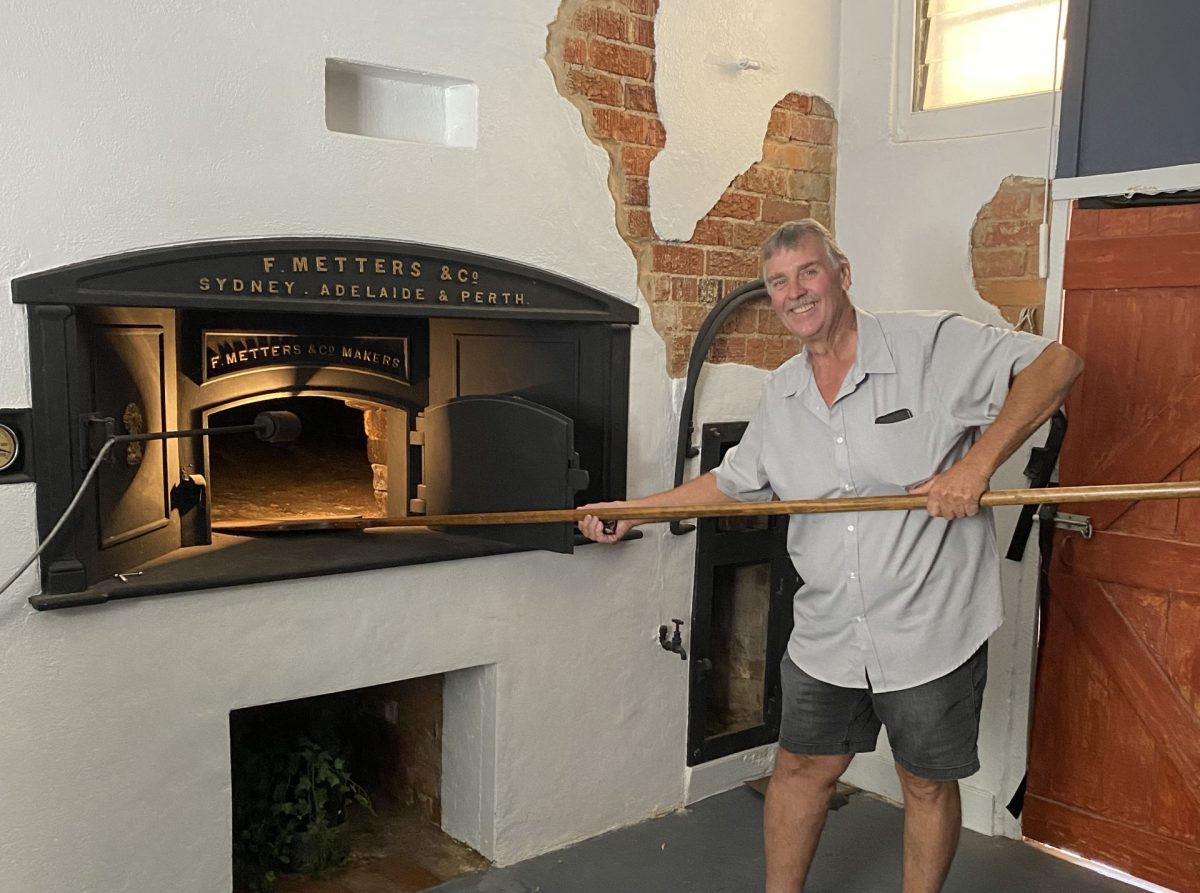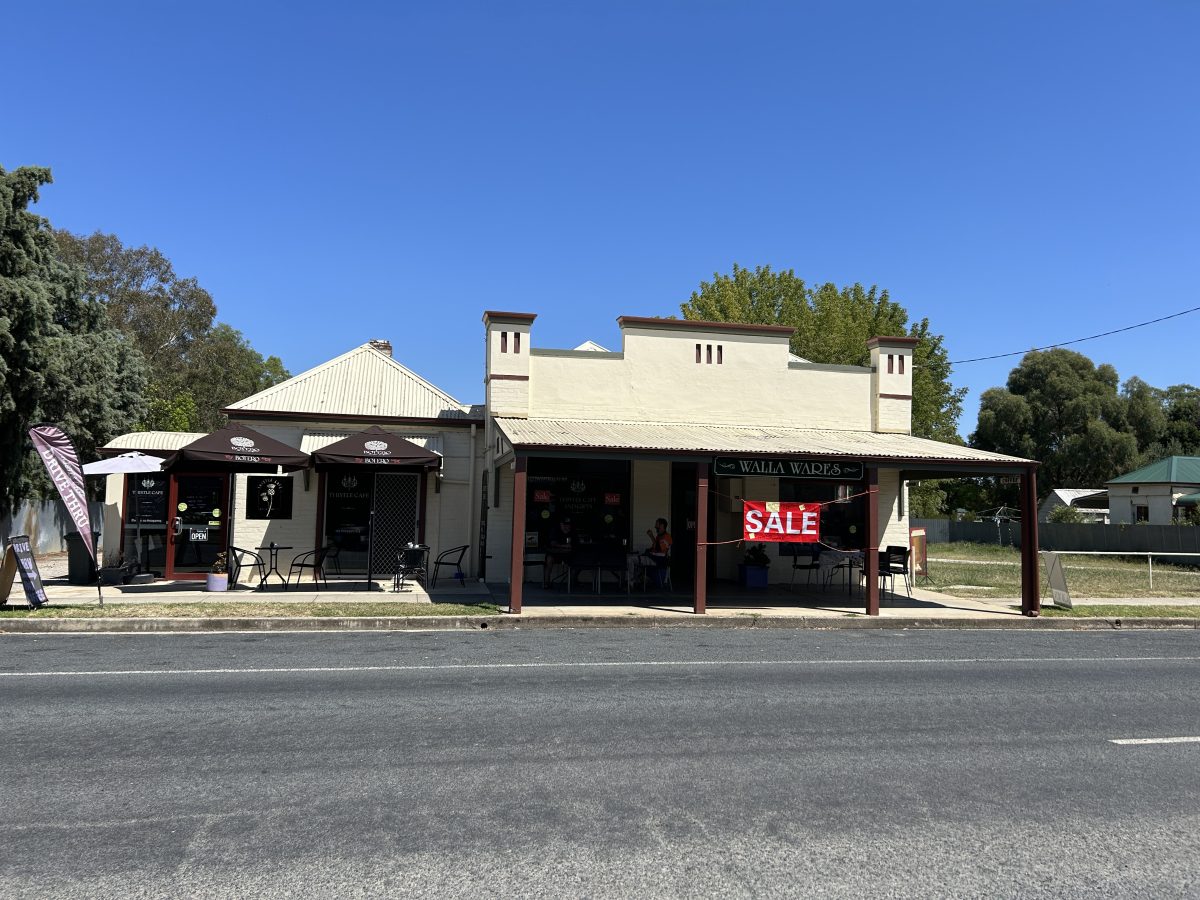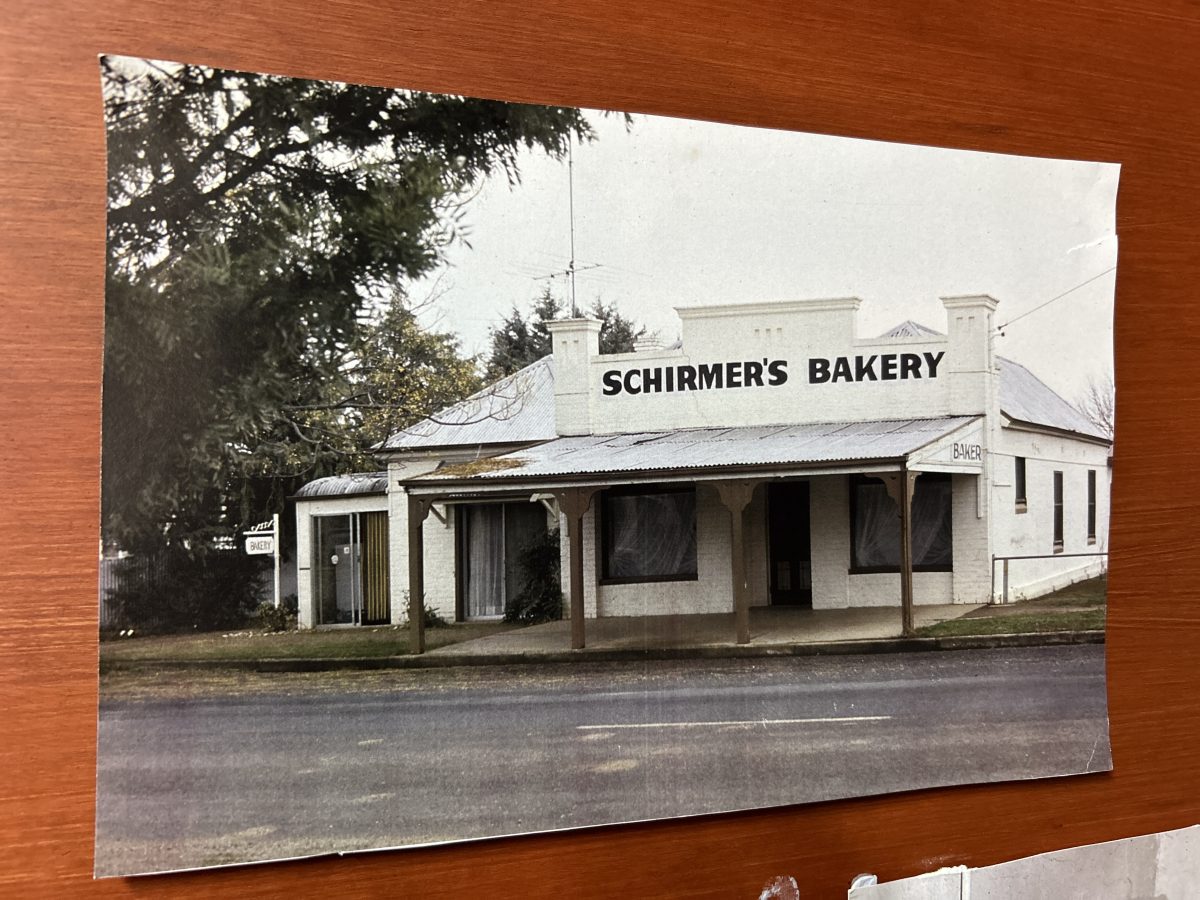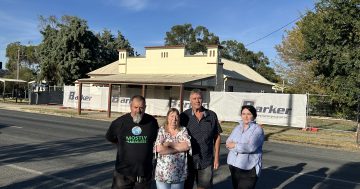
President of the Walla Walla and District Historical Society Graeme Wenke and the historically significant F. Metters & Co oven at the old Schirmer’s Bakery which is set to be demolished. Photo: Supplied.
Members of the Walla Walla community say the fight is not over to save the historical Schirmer’s Bakery building from demolition.
A development application to Greater Hume Shire Council to clear the entire site to make way for a supermarket and service station was successful in 2023.
The two businesses operating from within the 114-year-old building were forced to shut down on 24 February after the site was sold in 2023 and a new plan for the 4000-sqm block emerged.
While many in the community believe a supermarket is needed, they say the historical building could have been incorporated into the new plans.
Local resident Karen Wenke has been leading the charge to save the building and believes council has failed to recognise its significance.
“The bakery building is located in the Walla Walla Heritage Conservation Area, so the DA to demolish it should never have been approved by council,” she said.
Mrs Wenke, who has a Master’s in Cultural Heritage and Museum Studies, with a specialisation in collections and curatorship, heads up a small but active group of concerned citizens, residents of the Walla Walla Heritage Conservation Area and members of the historical society.
She says a big part of the building’s historical significance lies in the F. Metters & Co oven, a rare example of this type of baker’s oven (also known as a peel oven) and possibly the only existing example left in NSW or even Australia.

The building at the centre of the storm. Originally Schirmer’s Bakery and more recently home to Thistle Cafe and Walla Wares which both closed on 24 February. Photo: Vanessa Hayden.
“Council has a lot of unhappy locals who value their heritage assets and are sick and tired of the council not listening to our community about such important issues to us,” she said.
“The reason behind a conservation area is to preserve historical buildings, not to destroy them.
“A modern building like a service station does not belong in the oldest part of Walla and will certainly detract from the streetscape.”
In their conservation bid, the group lodged online objections to the development, wrote letters to council’s general manager, spoke at council meetings and lobbied councillors and state and federal MPs.
“We also contacted heritage professionals for advice, including the heritage advisor to council who mapped out and designated the heritage conservation area.”
Lorna Thistle, owner of the now closed Thistle Cafe, also collated a petition of 900 signatures, a number greater than the entire population of Walla Walla which in the 2021 census was listed as 811 people.
“The petition was barely acknowledged,” said Mrs Wenke.
“They didn’t listen to any of our arguments or admit that the building was in the Walla Walla Heritage Conservation Area until the following council meeting.
“They said buildings in the heritage conservation area have a lower form of protection. I disagree, as I work in the cultural sector and all the professional historians, architects and others I have consulted said that was a ridiculous comment.”
Greater Hume Shire’s director of environment and planning, Colin Kane, said council determined the building was able to be demolished.
“The NSW planning system consists of a hierarchy of planning legislation and in that hierarchy a development control plan (DCP) has the lowest weighting,” he said.
“For example, the inclusion of a building in the heritage schedule of the local environment plan (LEP) provides far more protection than inclusion of a building in the conservation area of the DCP.
“Council’s assessment report considered the provision within chapter nine of the DCP and determined that the building can be demolished. Council can give consent for the demolition of buildings that are listed in its LEP.”
Mrs Wenke disagrees and believes the development plan had “more holes than Swiss cheese”.
“Council’s in-house house historical reports claimed the building and surrounds had no environmental heritage value and there was no mention that the building was in a designated heritage conservation area, which should have been noted,” she said.
She’s also concerned that Holbrook, Culcairn and Henty all have heritage conservation areas which she says are listed on the DCP and the LEP whereas Walla Walla’s is only listed on the DCP.
“Heritage NSW said that was very unusual, as it should appear on both, so what is the explanation?” she said.
“It is not unreasonable for the Walla community to expect that any built heritage located within the heritage conservation area is protected and conserved, when it was recommended by a heritage professional employed by council in 2008.”
Mrs Wenke claims neighbours were not informed about the DA via council letters, changes made to the plan weren’t re-exhibited and that an application by Lorna Thistle to speak at a council meeting was refused.
Mr Kane denies there were any failures on council’s behalf and said the development application was advertised in accordance with the council community participation plan.
“There were minor amendments made between assessment and neighbour notification. The development was the same development and the amendments were addressed through conditions of consent,” he said.
In response to the claim the petition was ‘barely acknowledged’, Mr Kane outlined councillors had access to all submitted material which is provided in an unabridged form as part of council’s business paper.
He also said council meeting procedures dictate an application to speak must be made by 5 pm on the Monday immediately before the meeting, which Mrs Wenke admits was a deadline they missed.
Despite being in attendance at the meeting and making their presence known, she said Lorna was still not able to voice her objections on the day.
“Lorna was out of town when we got notice of the agenda and had limited internet connection but she had contacted the council to say her application to speak was on the way; we really thought they could have made an exception.”

Local oral history also demonstrates that the bakery stables were used by Cobb and Co and are the last example of a stable building used by a commercial business in Walla. Photo: Supplied.
Walla Bakery, as it was originally known, operated continuously on the site from the 1890s until 1983 when it officially closed. When the bakery burnt down in 1909, the community raised funds to help the baker rebuild. The oven was undamaged and still supplied baked goods to the community.
The new bakery building was constructed in 1910 and at 114 years old is much older than the buildings surrounding it, according to Mrs Wenke.
“We also know the oven was used by the new owners until 2003, but not commercially.
“Local oral history also tells us the bakery stables were used by Cobb and Co and are the last example of a stable building used by a commercial business in Walla. The bakery has a fully documented history from its early beginning until present day.”
For now, it’s a case of wait and see for Mrs Wenke and her group who are considering if their next step is increasing their public campaigning to stop the demolition.
“Funnily enough, I have had one 80-year-old lady ready to buy chains and a padlock as long as she is close to the toilet! Some others are quite happy to form a human shield, to which my response was, ‘Let’s hope it doesn’t come to that, but good to know!'”









